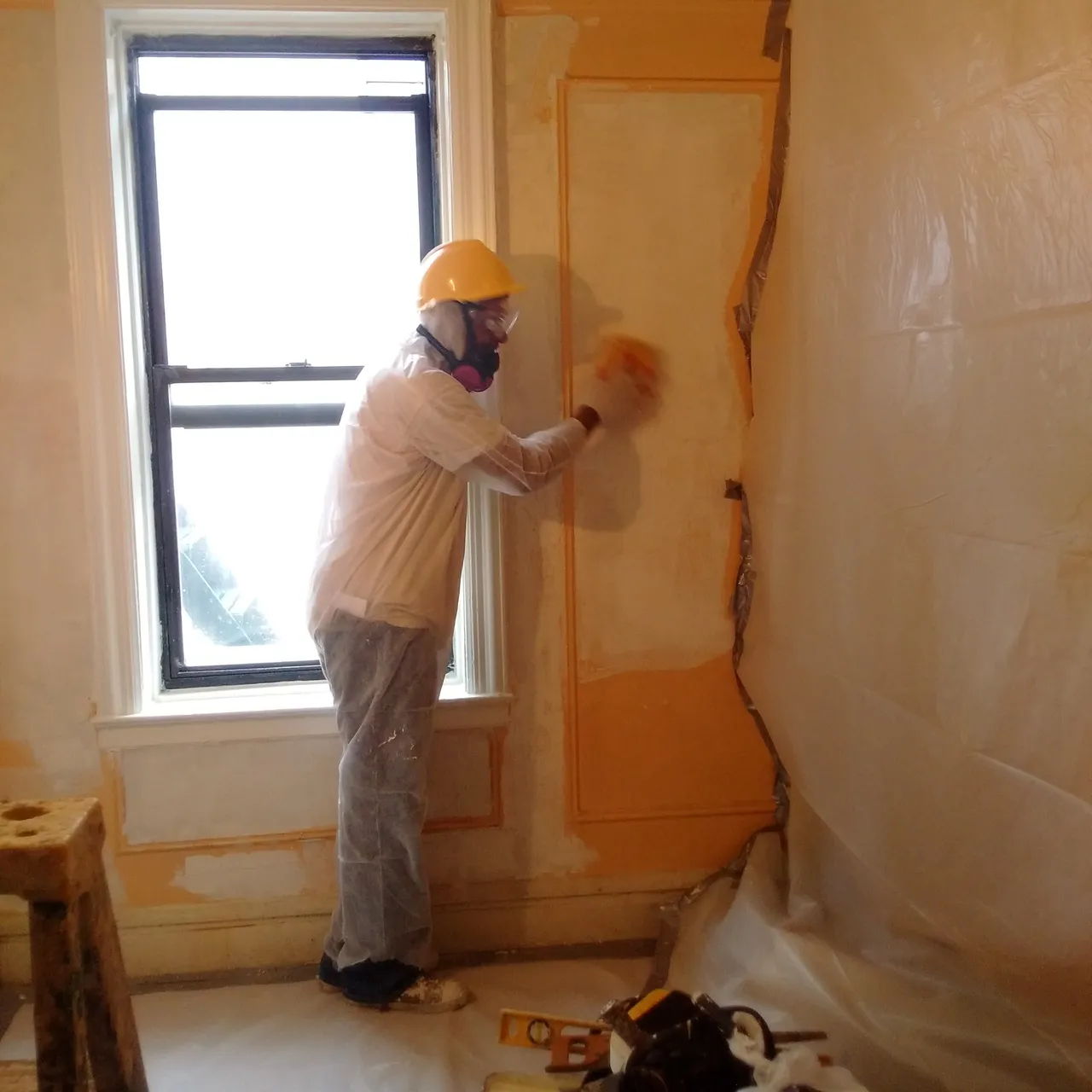Expert Lead Violation Removal in NYC-- Protect Against Wellness Hazards
Wiki Article
Ideal Practices for Making Sure Safe and Extensive Lead Infraction Reduction
Resolving lead infraction abatement calls for a multi-faceted approach to guarantee both safety and security and compliance. It's the last clearance process, involving complete examinations and research laboratory testing, that truly verifies a lead-free environment, ensuring long-lasting security. How do these techniques adjoin to assure detailed lead reduction?
Initial Assessment
Carrying out an initial assessment is an essential very first step in lead violation reduction. This phase includes a comprehensive examination of the home to determine the existence, level, and certain locations of lead-based hazards. Certified specialists, such as qualified lead examiners or risk assessors, need to carry out a thorough website assessment, utilizing devices like X-ray fluorescence (XRF) analyzers to precisely identify and determine lead concentrations in paint, dirt, dirt, and water.The assessment has to likewise consist of an evaluation of the building's background, previous reports, and any kind of problems or health and wellness concerns reported by owners - Lead Removal Contractors. Recording the findings diligently is vital, as these records form the basis for creating an efficient abatement strategy. A complete analysis likewise involves tasting and laboratory analysis, which are crucial to verify the visibility of lead and overview succeeding activities
Moreover, it is important to communicate the outcomes transparently to all stakeholders, including property owners, renters, and regulative authorities. By making certain that the initial evaluation is performed with accuracy and roughness, specialists can lay a strong structure for a targeted and efficient lead abatement procedure, eventually securing public health and making certain compliance with regulatory standards.
Correct Control
Correct containment is important to protect against the spread of lead pollutants during reduction tasks. Successfully handling control reduces the threat of lead dust and debris migrating to non-work locations, thereby protecting both the atmosphere and individuals outside the prompt job area.
Regular examinations of the control location are required to check for breaches or weak points in the obstacle. Any kind of determined issues need to be without delay dealt with to maintain the honesty of the control. By adhering to these methods, abatement projects can properly manage lead contamination and alleviate involved wellness risks.
Worker Security
Guaranteeing employee defense is critical during lead abatement projects to stop occupational exposure to dangerous lead particles. Necessary measures consist of using personal protective devices (PPE) such as respirators, gloves, and full-body fits especially made to obstruct lead dust and fumes. Workers must undergo comprehensive training on the proper usage and maintenance of PPE, including in shape screening for respirators to ensure maximum effectiveness.Engineering controls, such as regional exhaust ventilation systems, are vital in lessening airborne lead concentrations in the job atmosphere. Administrative controls should likewise be implemented, consisting of restricting the period of direct exposure and rotating employees to lower individual direct exposure times. Normal clinical surveillance and organic surveillance are essential for early detection of lead absorption, making it possible for prompt treatment and therapy.
In addition, developing a purification protocol is essential. Workers should comply with rigorous purification treatments prior to breaks and at the end of their shift to prevent lead dust from being brought outside the workplace. This includes complete hand and face cleaning with lead-specific cleaner and altering out of infected garments.
Precise Cleanup
Preserving a secure work atmosphere expands past worker protection and includes thorough clean-up to make sure lead fragments are thoroughly gotten rid of from the website. The process of thorough cleaning is essential in protecting against the recontamination of the abated area and safeguarding both existing and future residents.To attain a detailed cleaning, all workspace have to get more be methodically sanitized. This entails the use of specialized HEPA (High-Efficiency Particulate Air) vacuum cleaner cleaners and wet-wiping strategies to catch and remove fine lead dirt that might have picked surfaces. It is necessary to clean up all straight surface areas, including floors, window sills, and countertops, along with vertical surface areas that may have caught lead fragments.
Employees have to use proper personal safety devices (PPE) during cleaning to avoid direct exposure to recurring lead dirt. Utilized cleaning materials such as wipes, sponges, and mop heads ought to be taken care of according to unsafe waste disposal policies.

Last Clearance
Last clearance is the important concluding phase of lead abatement that identifies whether the site is risk-free for reoccupation. This vital step entails detailed assessment and screening to verify that all lead dangers have been successfully removed. The procedure begins with an aesthetic examination by a qualified lead-based paint inspector or danger assessor to make sure no noticeable dirt or debris remains. This is adhered to by accumulating dust wipe samples from different surface areas, consisting of floorings, windowsills, and various other straight surface areas. Lead Removal Contractors.
Final clearance testing not just secures future passengers however also guarantees compliance with neighborhood, state, and federal policies. Moreover, it functions as a recorded validation of the abatement professional's adherence to industry ideal techniques. Guaranteeing a complete and effective final clearance is necessary in protecting public health and wellness and fostering count on the abatement process.
Verdict
Making certain visit this website risk-free and detailed lead violation abatement requires a diverse approach including initial analyses with advanced discovery methods, efficient containment methods, stringent employee protection procedures, and precise cleaning procedures. The last clearance phase, including detailed assessments and laboratory screening, is important to confirm conformity with EPA requirements. browse around this site Adherence to these ideal methods guarantees a secure setting for residents, reduces wellness dangers, and upholds governing requirements, thus promoting public health and security in lead-affected areas.Report this wiki page